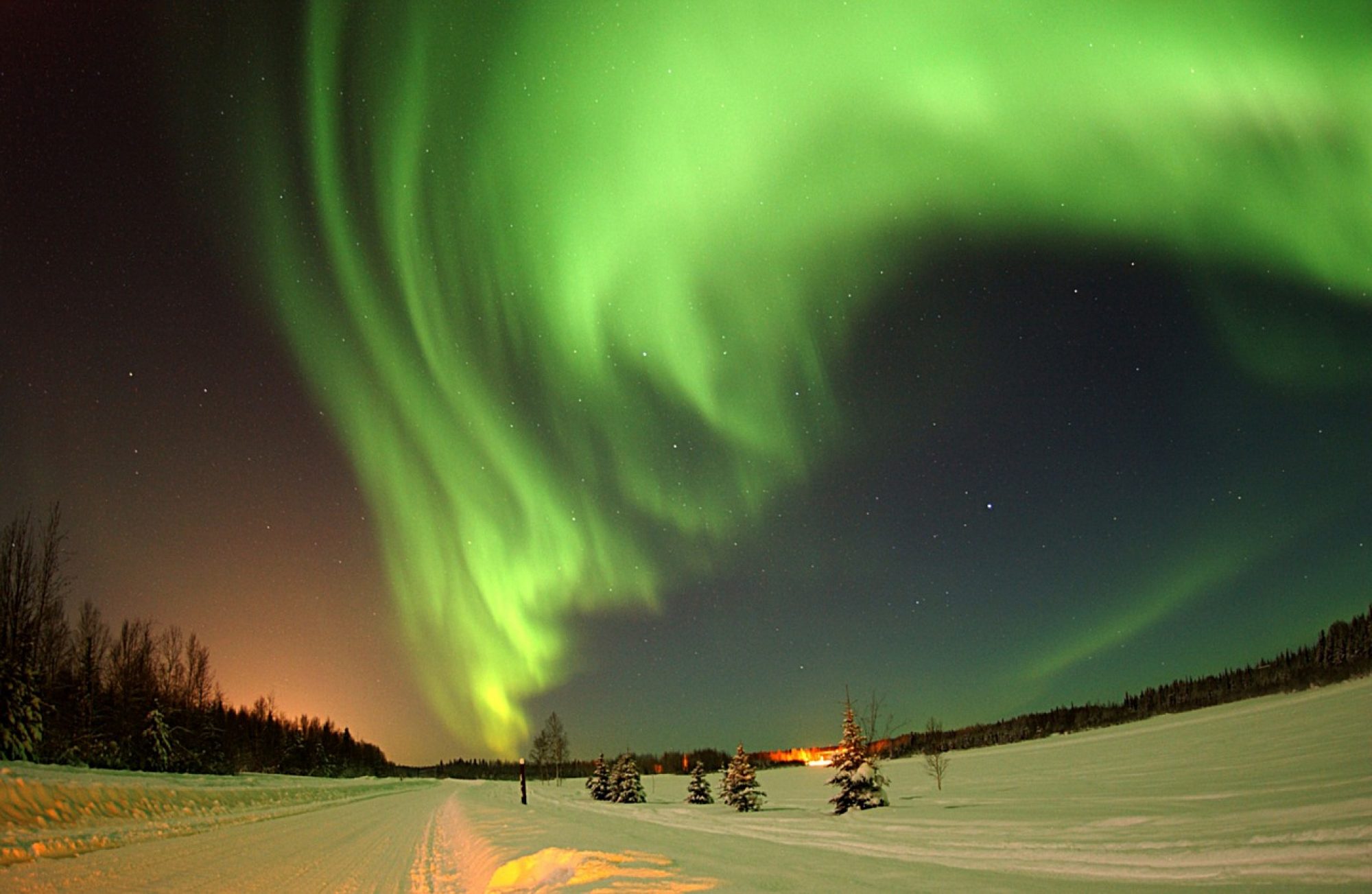Fishing Season Opens
There is a magic about Homer that’s difficult to resist. There is the call to the fishermen that set out in their boats in early spring, anticipating long days of sparkling summer floating among the coves, islands and into the wide ocean. There’s the close-up view of the volcanoes, Redoubt and Iliamna on the mainland, and Augustine, rearing up in triumph out of the ocean.
Even if you’re not on a boat, the view of Cook Inlet’s crown of volcanoes punctuating the ocean horizon is awe-inspiring. More so to realize you’re in a ring of fire and ice, with the plummeting fjords girdling the pastoral town of Homer.
That’s where the true charm begins. Homer has one of the sunniest coastal climates in Alaska. Located on the southwestern tip of the Cook Inlet, Homer’s summers are made up of long, sparkling hours. The spirit of festivity begins with the first welcoming days of spring. Shops that had slumbered through lazy trade all through the winter in a town with 5,000 year-round inhabitants, begin sprucing up their aisles, cleaning their windows to a sparkling finish, and setting out pots filled bright-colored flowers. Young men and women begin signing up for work on the boats or in the canneries. The first caravans of motor homes, campers and tent campers arrive from Anchorage, the smell of cod, halibut, salmon and shellfish in their nostrils. Within a few weeks, every camp ground, every parking spot will be full and bustling with an International flavor.
Where the Arts Flourish
Homer is much more than a town offering world class fishing. Deep in its embrace beats the heart of an artist. Those hands that aren’t busy tying fisherman knots are earnestly crafting from the gifts graciously handed up by Homer’s long beach front. Driftwood accumulates into yard ornaments, bright colored shells decorate center pieces and jewelry. Exquisite Native Alaskan carvings in ivory delight the eye of both window shoppers and buyers.
There are galleries filled with the paintings of Homer inspired artists. From modern impressionism to classical Alaskan landscapes, the images cling to you, filling your mind as deeply with the spirit of Alaska’s wild adolescence as with the magic of the volcano dotted coastline.
A Contrast of Lives
The town of Homer is a delightful mix between the rustic and modern. Gleaming supermarkets, fast food drive-through’s, stately banks mix casually among bed and breakfast’s, wood lodges, small cafes and quiet boutiques. Even on main street, many of the houses and establishments are set far enough apart for rolling lawns to sweep out in front of them, and comfortable hedges, blossoming with flowers to border their edges.
There is a mesmerization of quaintness. Children play in a grassy park. From a wooden inn tumbles the sounds of country music. Pedestrians walk casually, lingering at corners to chat with their neighbors. Ribald laughter sometimes spills from a doorway. Paved road breaks away to gravel roads and sweet farms or tucked away resorts and hostels.
Life on the Homer Spit
Leaving Homer to travel the four and a half mile long spit places you in a different world. The town of Homer is sheltered, the ocean winds muffled, turning the town into a warm, bright, tranquil environment on a sunny day.
The Homer spit begins with tide pools and the upended trunks of trees tossed around by the ocean, then left on the scouring sands. In the narrow elbow, float planes rock gently, tethered to their decks. Lifeless boats rest on their sides, rusted from sea salt. The prairie grass flattens under a constant wind.
The end of the spit is windy. You are basically four miles out to sea with nothing more than a narrow strip of land keeping you above water. At land’s end, there is less than a hundred yards separating you from the green waters of the Port of Homer and the rolling blue water of the ocean.
Up On Stilts
The spit is the liveliest part of Homer in the summer. Here, the rows of restaurants offer some of the finest marine food cooking in Alaska. Here, the charter boats are busy gathering clients for a day of halibut casting. Here the tourists gather in droves to spend the day looking out at the spectacular view, or visit the local shops.
The shops filled willed with bakery goods, ice cream parlors, hand crafts and art are primarily set up on stilts, with a boardwalk running between them. Bands begin playing in the early evening, their rock and roll sounds floating down to the beach loungers settled down with a picnic among the driftwood logs.
Crowded on the opposite end are the campers utilizing their tiny spaces to pitch tents, grill salmon or plug in their motor homes. The atmosphere invites a party. Cook Inlet residents, out for a few days fishing, find each other and gather around a campfire. Stories are swapped and tips handed out as to where the big schools are hiding. The young cannery workers meet up and unwind for the evening, playing on the beach or gathering together to listen to music. Eagles and seagulls screech overhead, competing for the thrown away scraps of fish or someone’s left-over dinner.
The Salty Dawg
If you don’t have hair on your chest nor ever really relished the thought of letting your hair down, the Salty Dawg Saloon may not be right for you. Homer’s oldest landmark, the rollicking, fun-loving bar could feature fishermen doing a jig or crack shot lady pool shooters. Who even knows the number of dollar bills pinned up on walls right now, each one scribbled with the note of someone who had been there and left their green calling card. Other items, as well, sometimes become attached to the wall’s trophy list, but it’s all in the spirit of Alaskan humor.
You take the humor in stride. If you sit long enough, you begin to feel both the history and culture. The cabin was one of Homer’s first constructions. Built in 1897, it has served as a post office, railroad station, grocery store and coal mining office for its first twenty years. After the 1964 earthquake, the historical building was moved to the spit and a light-house mimicking top was added to cover a water storage tank.
With its sawdust floor and low ceiling, you are transported into the still thriving spirit of the wild, wild north. Certainly not a place for vacationers to bring their children, it reels with the tales of Alaskan adventures, spiced with the appetites of the most daring and remains essentially a local retreat from the slick newness and busy bustle of the tourist oriented community on stilts.
The Beat Goes On
Creating International attention when the musical artist, Jewel, claimed Homer as her stomping grounds, it continues to be a place where music pours from every window and cries whimsically in the wind. There is an energy between the balance of a sleepy hamlet and an industrious spit that wakes to a new evolution of tourists and fishermen each spring. It’s an energy that stays with you long after you’ve packed your bags and wandered off to another destination or left for home. You don’t forget it; the sights, the sounds, the spontaneous laughter, the excitement of the big catch, the awe of the ring of fire, and it carries on inside that part of your mind that is always hearing the tunes of nature’s music.

